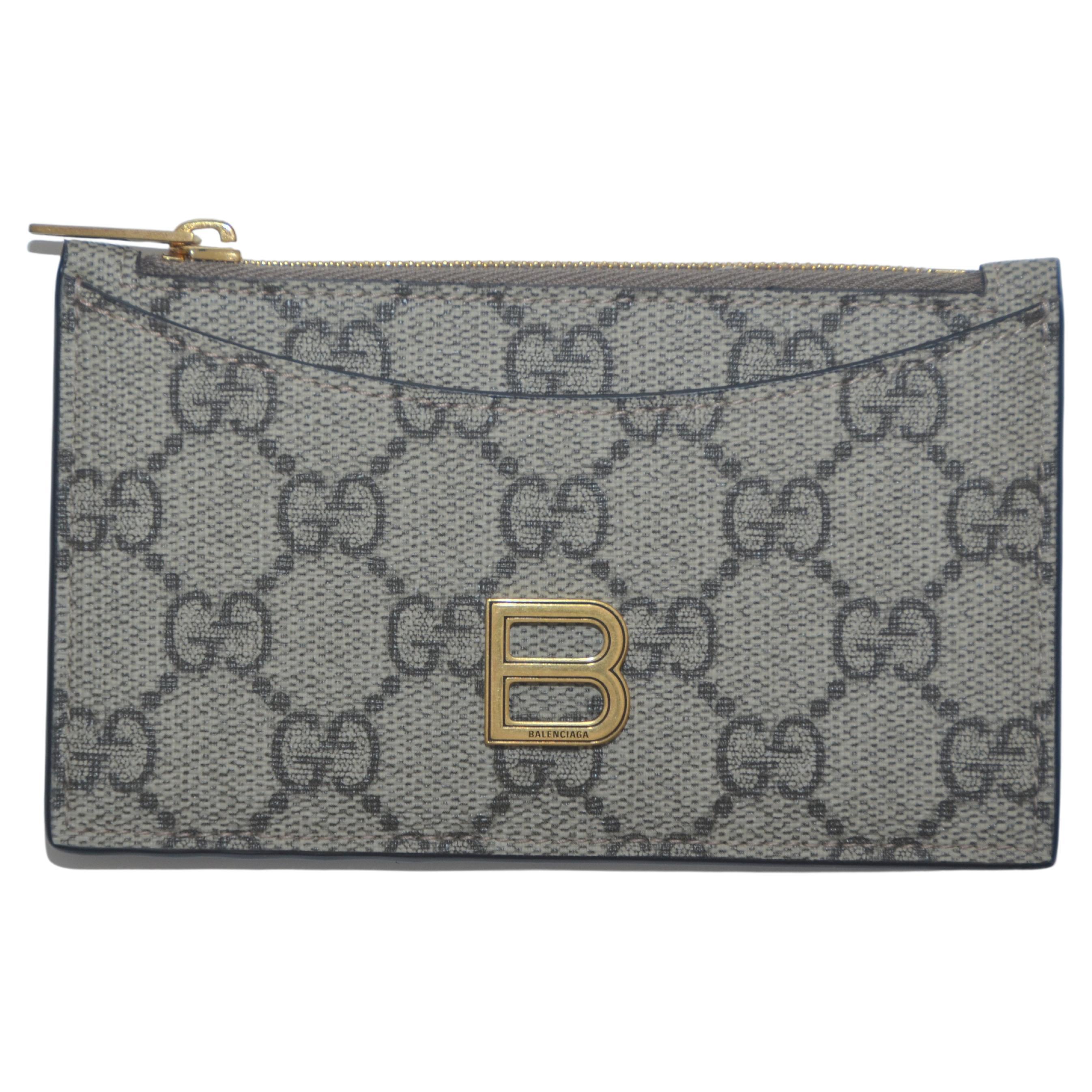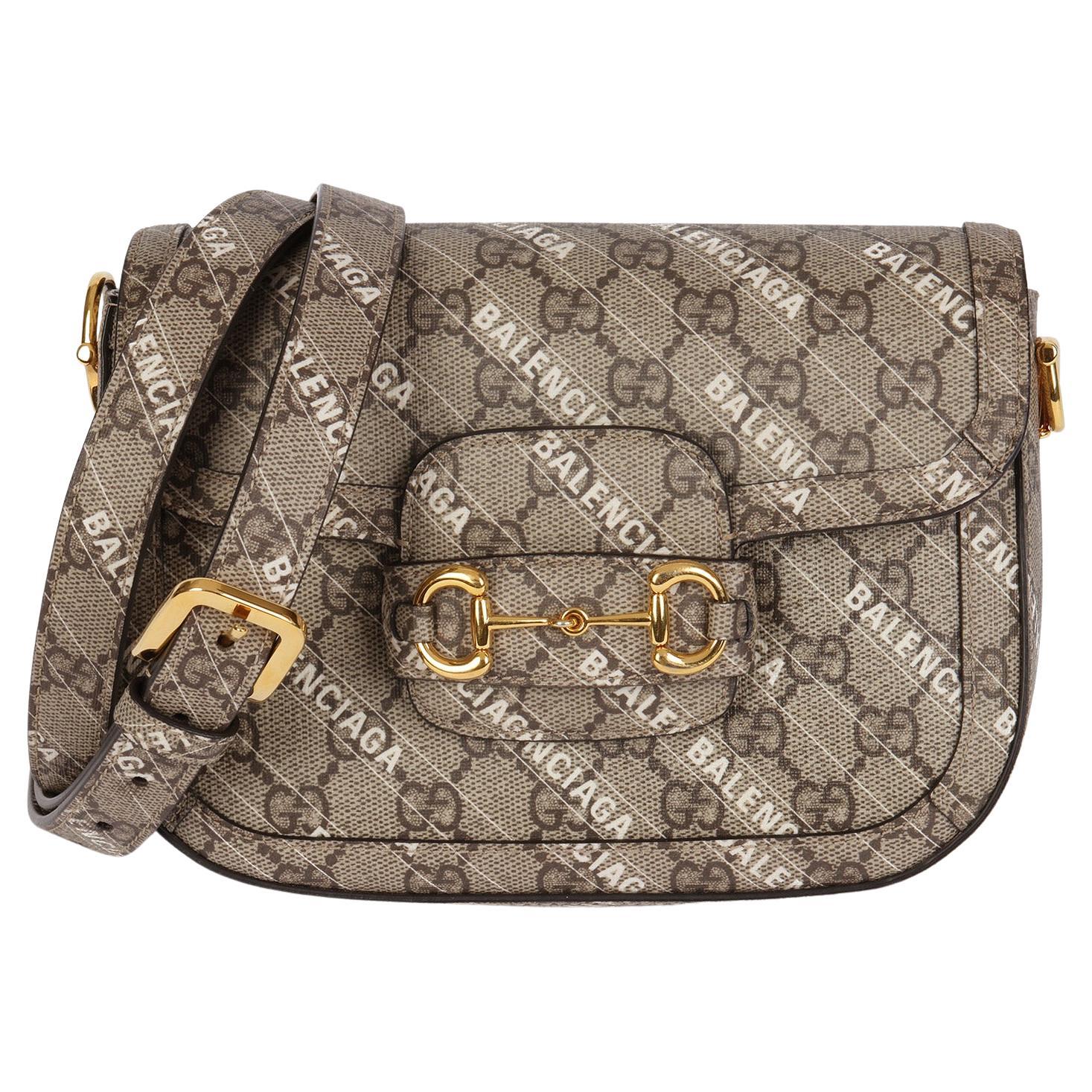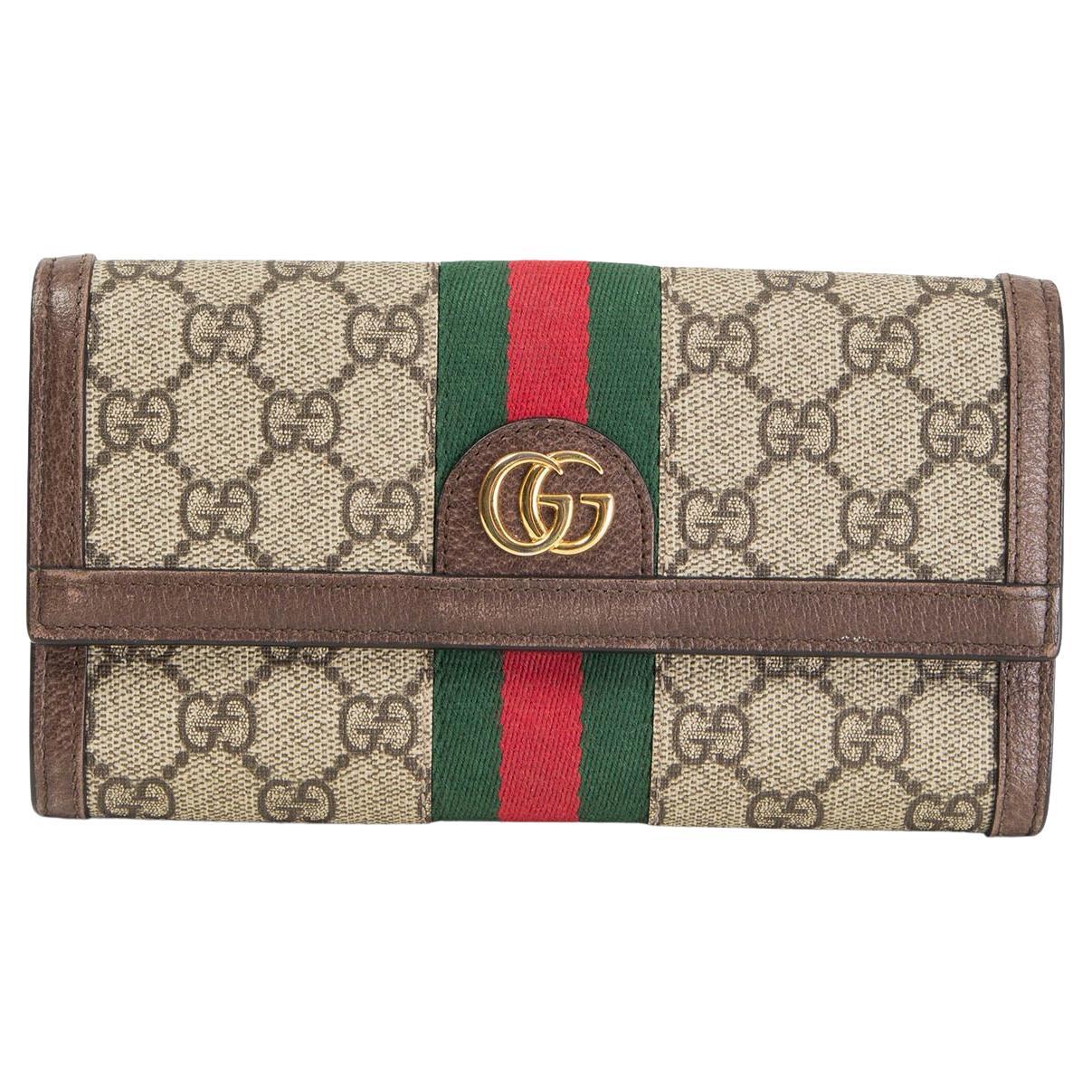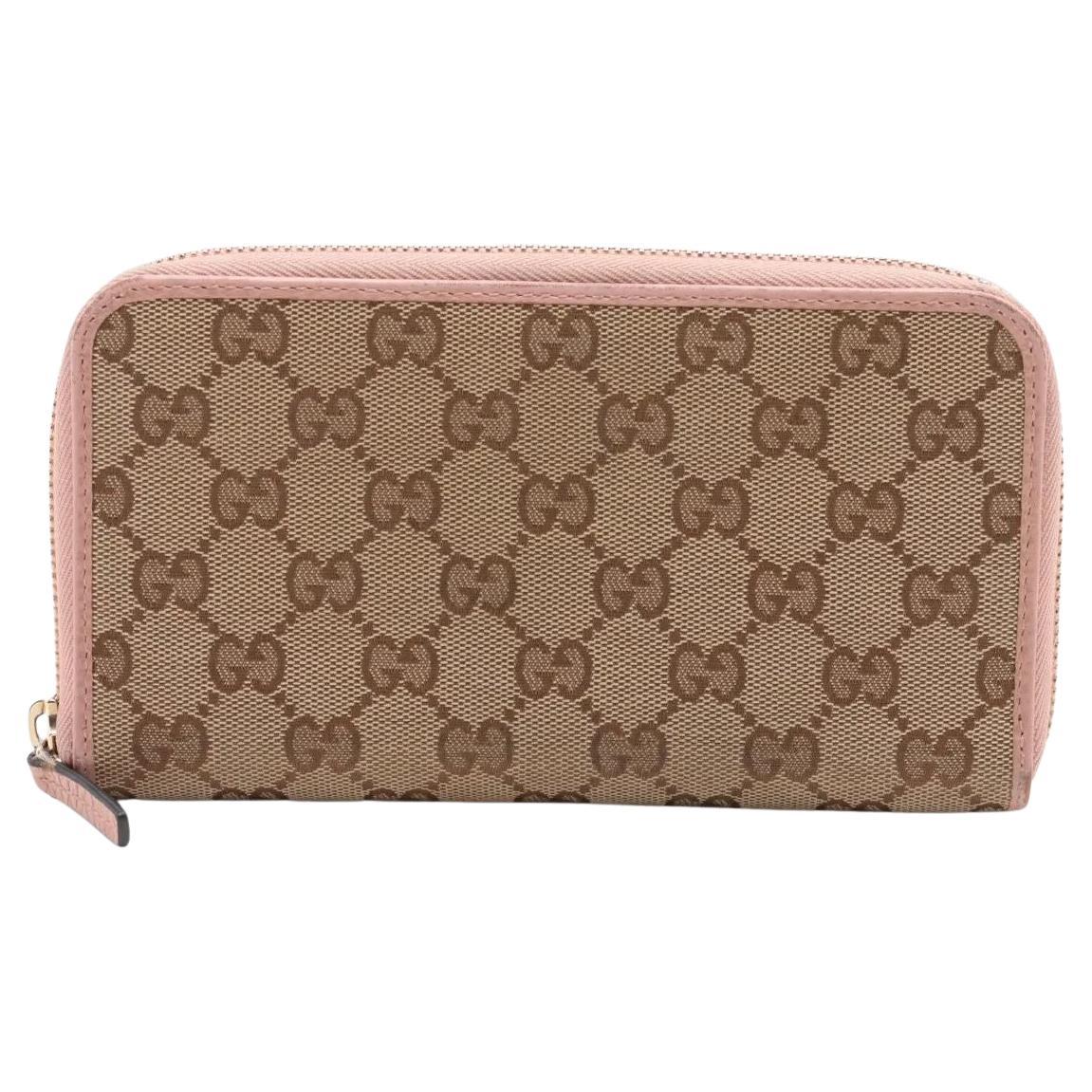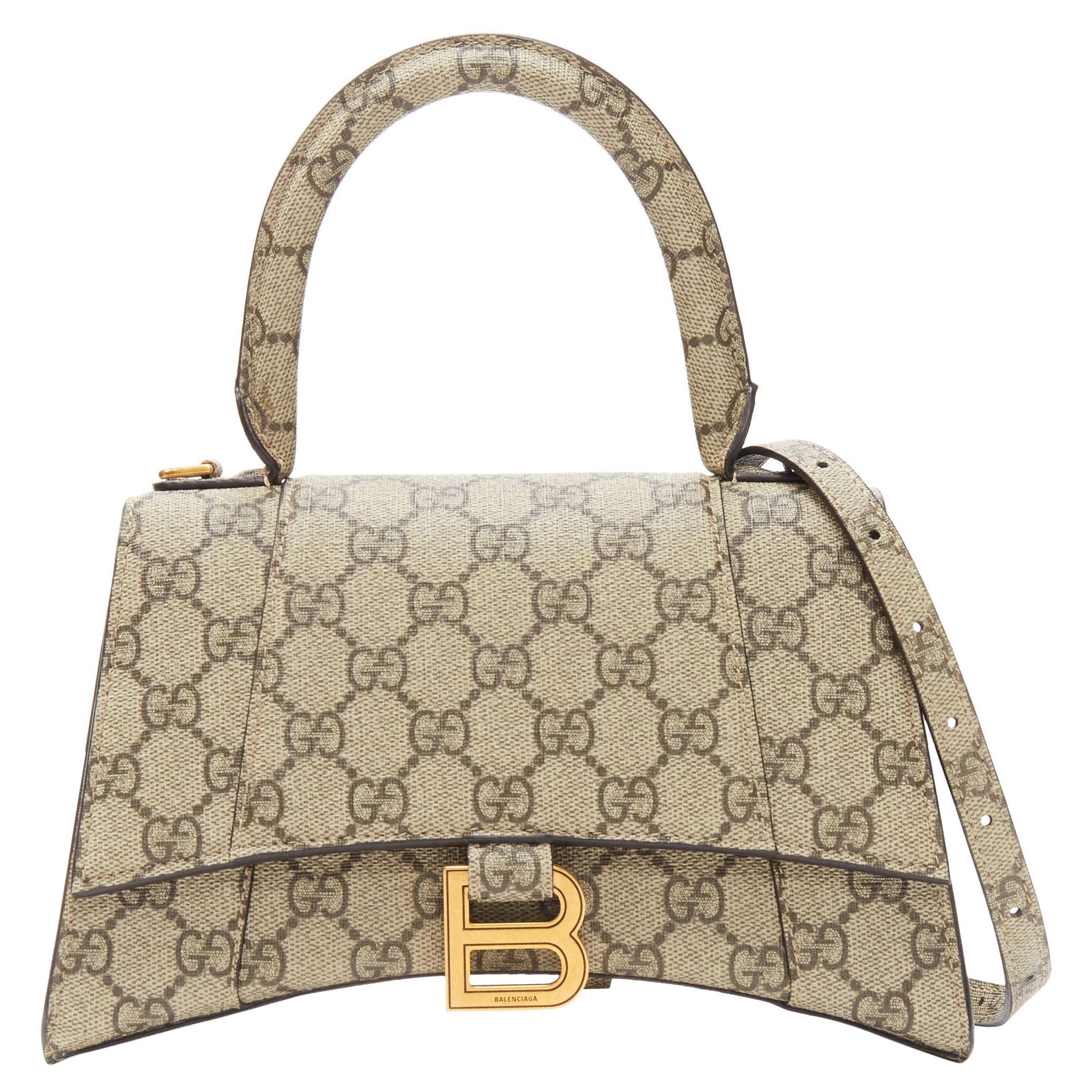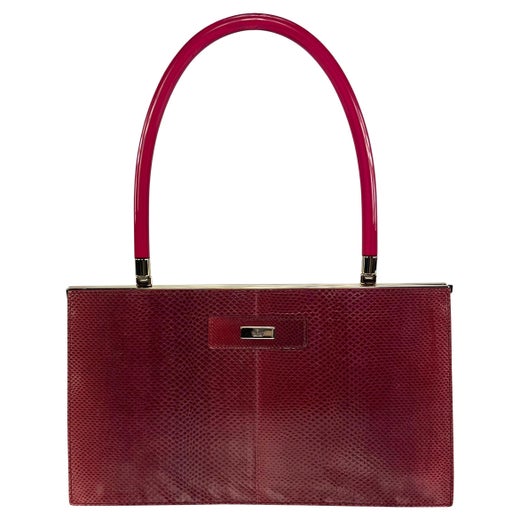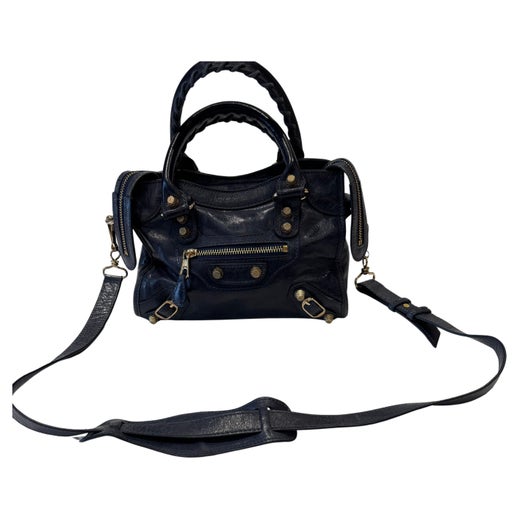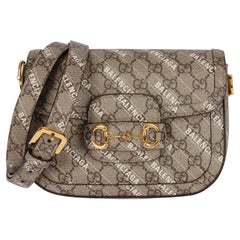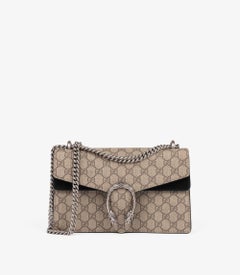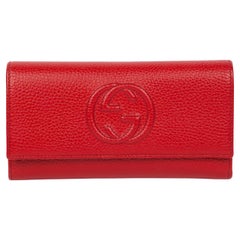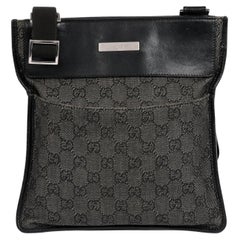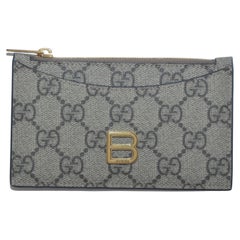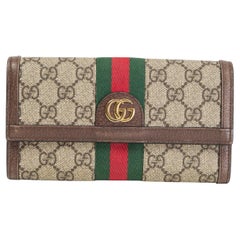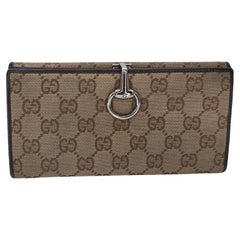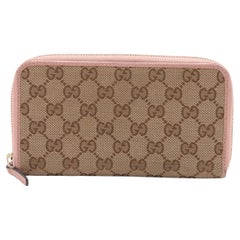Gucci x Balenciaga GG Supreme Canvas The Hacker Project Hourglass Card Case
About the Item
- Designer:
- Brand:
- Dimensions:Height: 3.15 in (8 cm)Width: 3.75 in (9.5 cm)Depth: 1.58 in (4 cm)
- Place of Origin:
- Period:
- Condition:
- Seller Location:Bishop's Stortford, GB
- Reference Number:Seller: AA01301stDibs: LU170216544682
Gucci
Long before trend-bucking creative director Alessandro Michele brought his hallucinatory “Utopian Fantasy” campaign to Gucci, it was a modest Italian leather shop. Today, it’s an internationally renowned luxury house with an iconic logo, and vintage Gucci clothing, handbags and shoes are among high fashion's most covetable goods.
Guccio Gucci (1881–1953) admired the stylish suitcases he saw wealthy guests arrive with at the Savoy Hotel in London, where he worked as a bellhop. So, in 1921, after a stint at Franzi, a luggage company in his hometown of Florence, he opened a leather goods shop of his own.
At first, Gucci’s Florence business specialized in equestrian accessories. But as its reputation flourished, particularly among the English aristocracy, so too did its footprint. In 1938, he brought three of his sons — Aldo, Vasco and Rodolfo — into the business and expanded it to Rome and later Milan. In the mid-1930s, a League of Nations embargo against Italy pushed Gucci to experiment with alternatives to imported leather. Its woven hemp fabric from Naples, adorned with the brand’s signature diamond print, was a hit, especially among A-list celebrities. The material was first used on suitcases before finding enduring popularity on handbags. (No list of revered designer purses would be complete without Gucci.)
In the 1950s, Elizabeth Taylor carried one of Gucci’s bamboo-handled tote bags, another adaptation to material rationing. After Jackie Kennedy was seen sporting a slouchy Gucci tote in 1961, it was renamed for the First Lady. Then Grace Kelly, on a visit to the boutique in Milan, inspired Rodolfo Gucci to work with Italian illustrator and Gucci textile designer Vittorio Accornero on the Flora print in 1966. Taking cues from Sandro Botticelli’s Primavera, with its pattern of flora and insects, it was painted entirely by hand and featured no fewer than 37 colors.
In 1953, just 15 days after opening his first store on New York’s 5th Avenue, Guccio passed away at 72. The early 1970s saw store openings in Tokyo and Hong Kong, but by the late 1980s, Gucci was floundering. Rodolfo Gucci took charge in 1982, but family drama and lawsuits ensued. In 1993, Rodolfo’s son, Maurizio, transferred his shares in the company to Investcorp, ending the family’s involvement in Gucci. Dawn Mello, then-president of Bergdorf Goodman, joined as creative director in 1989. But it was Tom Ford, who took over as creative director in 1994, who ultimately revived the brand.
Ford’s racy ads, shot by photographers such as Mario Testino, stirred controversy. And his potent vision of sexed-up femininity — with “jewel-toned satin shirts unbuttoned to there,” as Vogue described his breakthrough 1995 runway show — was wildly successful. The new millennium brought new ownership — Pinault Printemps Redoute in 2004 — and a more toned-down vision from Frida Giannini, who became sole creative director in 2006. Alessandro Michele was named creative director in 2015, and the storied brand took a giant leap forward.
Find vintage Gucci clothing and accessories on 1stDibs.
Balenciaga
Starting as a modest boutique, Balenciaga evolved to transform the landscape of women’s fashion with shapes and contours during the middle of the 20th century that were nothing less than groundbreaking. Today, the brand is as venturesome as ever and is well known for its shoes, handbags, sneakers, streetwear and other clothing and accessories.
Though he was born in the quiet fishing village of Getaria in Spain’s Basque region, Cristóbal Balenciaga (1895–1972) was destined to reshape modern fashion. As a child, he worked alongside his seamstress mother. Showing immense talent, he earned commissions as a teenager from local patron Marquesa de Casa Torres, who paid for his tailoring education in Madrid. In 1917, he established his first haute couture house — named Eisa, for his mother — in the trendy resort town San Sebastián. He soon followed it with boutiques in Madrid and Barcelona, drawing such clientele as the Spanish royal family.
When the Spanish Civil War put a hold on his prospects in Spain, the designer moved to Paris, opening a house on Avenue Georges V in 1937. There, Balenciaga rubbed elbows with fashion greats like Coco Chanel and Elsa Schiaparelli and quickly won over clients like Gloria Guinness, Pauline de Rothschild and Wallis Simpson, Duchess of Windsor.
As a couturier, Balenciaga drew from his Spanish heritage for ideas, riffing on everything from matador costumes and flamenco dresses to the paintings of Diego Velázquez, whose portraits of Spanish princesses famously inspired Balenciaga’s Infanta gown.
An expert tailor, he experimented with sculptural silhouettes that didn’t follow the body. Some of his notable designs include the 1953 balloon jacket, and from 1957, the cocoon coat, the baby-doll dress and the sack dress, which he popularized with his good friend designer Hubert de Givenchy. All of these could be considered not just the masterpieces of haute couture, but also objets d’art in their own right, leading to Balenciaga’s nickname, “The Master.”
Balenciaga continued designing until 1968, when he retired after three decades of influential work and his fashion house went dormant. The rights to Balenciaga were acquired by Jacques Bogart S.A. in 1986. Under designer Michel Goma, who focused on ready-to-wear, the brand experienced a resurgence, with his first collection introduced in 1987.
The brand returned to high fashion with the arrival of designer Josephus Thimister in 1992. It has since been led by a series of creative directors who have paid homage to Balenciaga’s iconic designs, including Nicolas Ghesquière, Alexander Wang and, most recently, Demna Gvasalia. In 2011, a museum celebrating Balenciaga’s legacy opened in his hometown in Spain, commemorating where it all began.
On 1stDibs, find vintage Balenciaga crossbody bags, tote bags, day dresses, shirts and more.
- ShippingRetrieving quote...Shipping from: Bishop's Stortford, United Kingdom
- Return Policy
More From This Seller
View All2010s Structured Shoulder Bags
21st Century and Contemporary Italian Structured Shoulder Bags
21st Century and Contemporary Italian Wallets
21st Century and Contemporary Italian Crossbody Bags and Messenger Bags
2010s Top Handle Bags
2010s Italian Top Handle Bags
You May Also Like
21st Century and Contemporary Wallets and Small Accessories
2010s Italian Crossbody Bags and Messenger Bags
21st Century and Contemporary Italian Wallets
2010s Italian Wallets and Small Accessories
21st Century and Contemporary Italian Crossbody Bags and Messenger Bags
2010s Wallets and Small Accessories
Read More
Gucci’s Anatomical Heart-Shaped Bag Is Surprisingly Romantic
Created during Alessandro Michele's tenure at the brand, this sparkling, whimsical minaudière feels just right for a night out.
Explore a Century of Gucci Fashion in London
The iconic Italian label’s traveling exhibition has just arrived in London.
